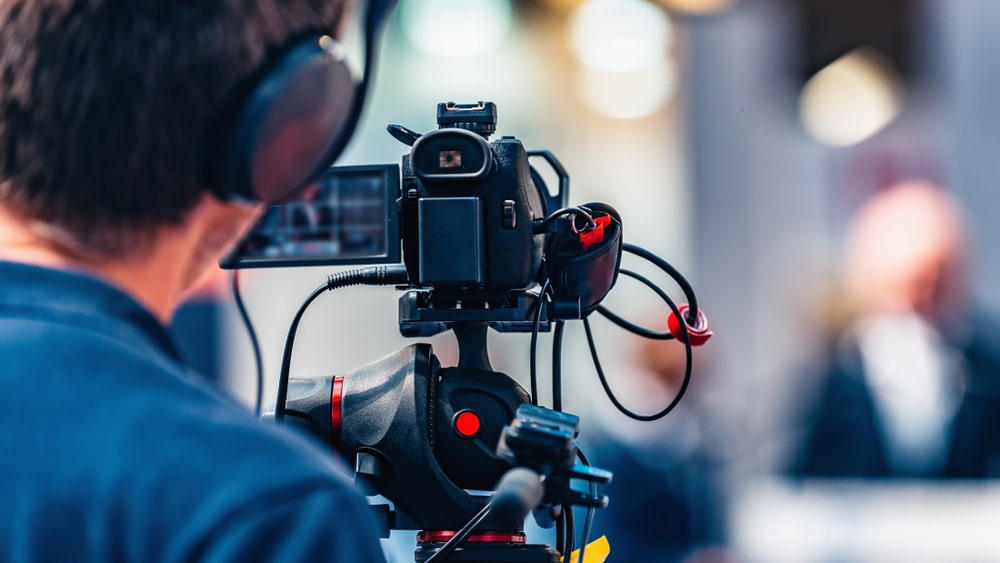The Duty of Legal Videography in Depositions and Tests
Legal videography has become a crucial tool in both depositions and trials, offering a complex method to documenting witness statements. By recording not just the talked word but additionally the subtleties of non-verbal interaction, this tool boosts the reliability of statements and protects important evidence for future process. As attorneys significantly identify its worth, it prompts a much deeper examination of just how these aesthetic records can affect juror understandings and trial outcomes. What implications might these advancements hold for the future of legal practice?
Importance of Lawful Videography
Legal videography plays a pivotal function in the documents and discussion of depositions and tests. This customized area integrates technical skills with lawful expertise to create a trustworthy record of proceedings that can significantly influence case end results. The aesthetic facet of lawful videography improves the understanding of witness testimony, permitting jurors and judges to observe not only the spoken words but additionally the disposition, feelings, and body language of the witnesses.

The relevance of legal videography expands past the court; it likewise plays a crucial function in preserving evidence for future reference, whether for appeals or additional legal activity. Its integration right into the lawful process is important for making certain a reasonable and accurate depiction of the facts, eventually adding to the pursuit of justice.

Refine of Legal Videography
While catching the nuances of depositions and tests, the procedure of lawful videography entails a number of essential actions that make sure top notch, precise recordings. Initially, a professional lawful videographer prepares by examining the situation materials and understanding the specific requirements of the deposition or trial. This preparation includes familiarizing themselves with the participants and the context, which helps in recording relevant information.
On the day of the recording, the videographer sets up the required equipment, which normally includes high-definition electronic cameras, microphones, and correct lights. Ensuring optimal angles and sound top quality is essential, as it straight impacts the performance of the recording. The videographer communicates with lawyers and participants to establish procedures, ensuring that everybody recognizes the recording procedure.
During the deposition or test, the videographer carefully records the procedures, paying attention to both verbal and non-verbal cues. legal videography. This consists of recording the behavior and reactions of witnesses and lawyers. After the session ends, the videographer may modify the video footage for clearness and conformity with legal standards, creating a final item that accurately mirrors the procedures for future recommendation and use in lawful contexts
Benefits in Depositions
The incorporation of videography in depositions provides many advantages that improve the total procedure of gathering evidence. One primary advantage is the capability to capture witness statements with visual and acoustic fidelity, giving a more accurate depiction of the witness's temperament, tone, and body language. This multidimensional approach allows lawyers and juries to examine reliability much more efficiently than standard written transcripts alone.
Furthermore, videographed depositions offer as a powerful device for preserving statement. Must a witness ended up being inaccessible for test, their taped deposition can be played in court, ensuring that their proof remains accessible and pertinent. This aspect considerably lowers the danger of losing crucial information that might affect case end results.
Additionally, the use of legal videography promotes better prep work for lawyers. Reviewing video footage enables lawful teams to evaluate and fine-tune their methods, recognizing toughness and weaknesses in their situations. This preparatory benefit can lead to more compelling discussions in court.
Lastly, videography boosts the total professionalism of the deposition process, instilling confidence in customers regarding the thoroughness of their legal depiction. By leveraging modern technology, lawful specialists can considerably boost the effectiveness of depositions.
Influence on Tests
In lots of trials, the assimilation of videography can substantially influence the presentation of proof and the court's perception. Legal videography catches witness testaments and essential evidence in a dynamic layout, allowing jurors to involve with the material on multiple degrees. This aesthetic component boosts the narration aspect of a test, offering context and psychological resonance that conventional text-based proof might lack.
Furthermore, video recordings can work as effective devices for impeachment throughout cross-examination. When inconsistencies arise in between a witness's prior declarations and their courtroom statement, video clip proof provides an unbiased reference that can sway jurors' viewpoints. This immediacy and clearness can boost the trustworthiness of a party's story while at the same time threatening opposing arguments.
Furthermore, the use of videography can aid improve complex details, making it extra easily accessible to jurors who might struggle to grasp intricate details provided exclusively with spoken testimony. By combining visuals with auditory details, legal videography can enhance retention and have a peek here understanding, eventually influencing the jury's decision-making procedure. As a result, the impact of videography in trials prolongs beyond simple looks; it plays a critical function more fit the legal landscape and end results.
Future Trends in Legal Videography
As we look towards the future of legal videography, several emerging trends promise to reshape its role within the court room. One considerable pattern is the combination of expert system (AI) in video analysis and modifying - legal videography. AI can enhance the process of determining key moments in tape-recorded depositions, enabling lawyers to quickly access relevant web content, thus improving effectiveness in situation preparation
In addition, the increase of digital fact (VIRTUAL REALITY) and enhanced truth (AR) technologies is anticipated to change exactly how jurors experience evidence. By submersing jurors in a simulated environment, these innovations can offer a more profound understanding of intricate circumstances, leading to even more enlightened considerations.

Furthermore, the increasing need for remote depositions, increased by the COVID-19 pandemic, will likely continue. Legal videographers will certainly require to adjust to brand-new software application and platforms to make certain top notch recordings in digital settings.
Finally, the growing emphasis on data security will require stricter protocols for saving and sharing video clip evidence. As the legal landscape advances, legal videographers should remain abreast of these patterns to preserve their relevance and performance in the judicial procedure.

Final Thought
In recap, lawful videography serves an go to my blog essential function in the judicial procedure, boosting the stability of depositions and tests. As innovation continues to develop, legal videography is positioned to additional transform its function within the legal landscape.